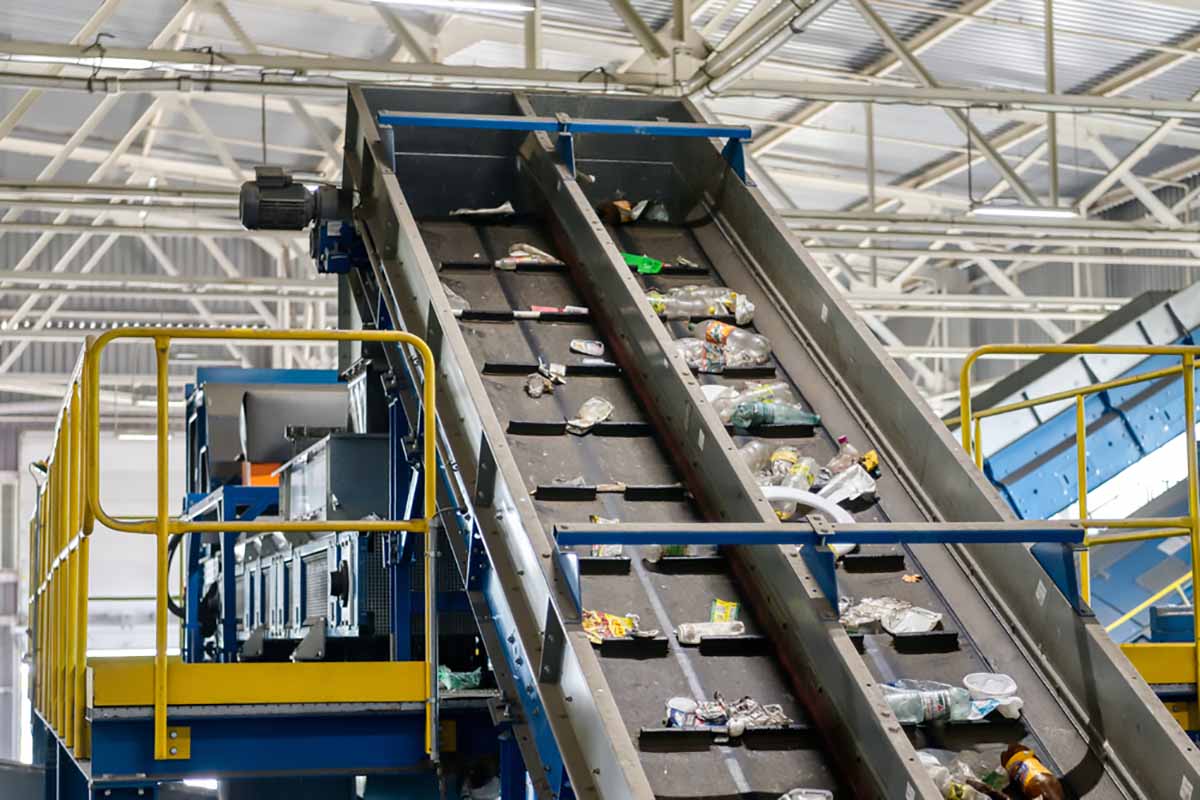
The Association of Plastic Recyclers’ Recycling in Action initiative is encouraging MRFs to give more public tours. | Nordroden/Shutterstock
The first time I stepped inside a recycling facility, I was overwhelmed. Even with earplugs, the noise was relentless — the hum of machinery, the clatter of cans, the whir of conveyor belts. But what struck me most wasn’’t the sound. It was the sheer volume of material being sorted at lightning speed by robotic arms and optical sensors.
That material, I learned, was sent to reclaimers to be shredded, cleaned and manufactured into recycled content that could replace virgin material. Plastic bottles, aluminum cans, cardboard boxes — items that had served their purpose — were being processed with precision and prepared for a second life.
When we drop recyclables in the bin, most of us have no idea what happens next. Recycling is a fascinating and complex system that relies on participation from millions of Americans. Yet many people never see recycling in action. Without seeing, they might not believe. And if they don’’t believe, they won’’t participate.
This May, the Association of Plastic Recyclers is helping change that. Through our Recycling in Action initiative, facilities across the country will open their doors to give people a first-hand look at the highly technical process that turns used plastics into valuable materials that fuel U.S. manufacturing.
We launched this effort because directly seeing the process is one of the most effective ways to counter the misinformation that is steadily eroding public trust in recycling. Misleading claims include like “”less than 10% of plastic is recycled,”” a statistic that’’s often repeated without context. What is often left out is that number is calculated based on the total amount of plastic generated and includes durable goods like car parts, appliances and medical devices, items that are not meant to be recycled in residential and commercial recycling programs.
The truth is that the majority of recyclable plastic that Americans put in their bins, including more than 70% of PET and HDPE containers like water bottles and milk jugs, are, in fact, recycled. In 2022 alone, thanks to the work of recyclers, local programs and individuals across the country, more than 5 billion pounds of plastic were kept out of landfills and recycled here in the U.S. That’’s the equivalent of 340 fully loaded 18-wheelers every single day.
Further, recycling plays a vital role in the U.S. economy. Nearly 40% of manufacturing inputs come from recycled materials, including plastics, paper, steel and glass. Recycling directly employs more than 171,000 Americans, supports nearly 425,000 additional jobs and generates billions in tax revenue. It also saves energy. Producing plastic from recycled material requires at least 75% less energy than producing it from virgin sources. In 2022, the energy saved by plastic recycling could have powered over a million homes for a year.
These aren’’t just numbers — they’’re the foundation of a circular economy that benefits businesses, communities and the environment. Of course, recycling alone won’’t solve plastic waste. Companies and consumers alike should also reduce their use of unnecessary plastic and adopt reusable options where it makes sense. And recycling can and must work better, spurred on by more investment, broader participation and smart public policy. But dismissing recycling ignores its proven benefits and makes the problem worse. When people believe recycling doesn’’t work, they don’’t stop buying plastic; they just stop recycling it.
That’’s why Recycling in Action matters. Recycling shouldn’’t feel abstract or hidden. It’’s happening every day in communities all across the country. When people see the process with their own eyes — how recyclables are sorted, processed and transformed — they gain confidence in the system and a greater understanding of its role in a sustainable future.
The truth is simple: Recycling works. And it’’s time that message is heard, seen and believed.
Pia Baker is marketing director for the Association of Plastic Recyclers, which owns Resource Recycling, Inc., the publisher of Plastics Recycling Update.

